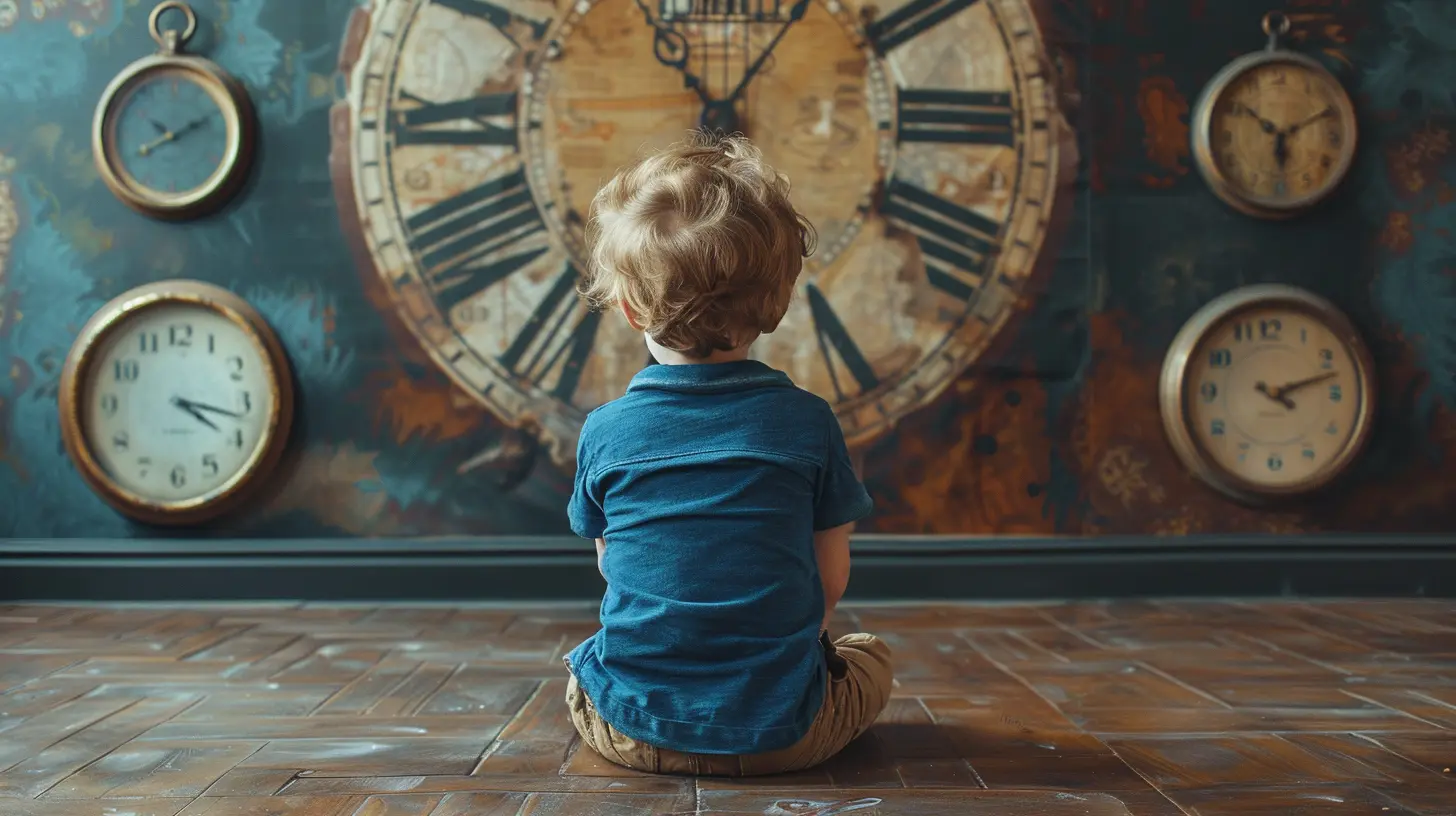The Importance of Routine: How Structure Affects Child Behavior
12 August 2025
Let’s be real — parenting can sometimes feel like herding cats while juggling flaming swords, right? Kids are wild cards. One moment they’re snuggling on the couch, and the next, they’re screaming because someone looked at their Lego tower wrong. If this sounds familiar, you’re not alone. But here’s the secret sauce that can take the chaos down a notch: routine. Yep, good ol’ structure.
Routine might sound a little boring (and let’s face it, some days it totally is), but it’s actually one of the most powerful tools in a parent’s toolbox. In this article, we’re diving into the importance of routine and how it affects child behavior. We’ll talk about why kids crave structure (even when they fight it), how it helps with emotional regulation, and how YOU can build a routine that works — without turning your house into a boot camp.
So, coffee in hand? Comfy seat? Alright. Let’s get into it.
Why Do Kids Need Routine?
Imagine waking up every morning without any idea of what’s going on. No schedule. No clue when you’re eating or what comes next. Sounds exhausting, right?That’s kinda what it’s like for kids without a routine.
Children thrive on predictability. It helps them feel safe, secure, and in control — even when their little worlds get complicated. While adults may crave spontaneity from time to time, kids... not so much. Consistency gives them a sense of stability.
Think of routine as a warm, cozy blanket that wraps around your child’s day. It helps smooth out the emotional rollercoasters and sets the tone for positive behavior.
Structure = Emotional Superpowers
Here’s where it gets really cool. Routine doesn’t just keep meltdowns at bay (although that alone is worth its weight in gold). It also teaches kids emotional regulation.When a child knows what's coming next, they’re less likely to feel overwhelmed or stressed. They don’t have to constantly wonder, “What’s happening now?” or “When do I get to play/watch TV/eat snacks?” That predictability frees up brain space and helps them focus on learning, growing, and just being a kid.
Plus, when transitions are consistent — like dinner always follows playtime — kids know how to shift gears more easily. They’re not caught off guard, which means fewer tantrums and more cooperation.
Win-win, right?
Routines Teach Responsibility (Without the Nagging)
Okay, so your kid might not leap out of bed excited to brush their teeth every morning. But with routine, those daily tasks become second nature — almost like muscle memory.Doing the same tasks at the same time each day builds habits. And habits = independence.
Over time, kids start to take ownership of their routines. They know what’s expected, and they don’t need you to helicopter every step of the way. It’s like giving them a roadmap — you're still driving the car (for now), but they’re learning how to read the signs.
And guess what? That structure actually boosts self-esteem. When kids can do things on their own, they feel capable and proud of themselves. We’re talking serious confidence boosters here.
Behavior Management Made Easier
Ever notice how behavior tends to slide when bedtime gets pushed back or there’s no plan for the evening? You’re not imagining it.Routine acts like a behavioral anchor. It sets boundaries, not in a strict or bossy way, but in a way that makes expectations clear. Kids are far less likely to test limits when the boundaries are predictable.
Let’s look at an example.
If 7:30 pm is always bedtime, there’s less negotiation. No “Just five more minutes!” every night. It’s simply the rule, part of the routine, just like brushing teeth or putting on pajamas. This structure reduces power struggles and helps your child feel more in control — even if they pretend to hate it.
The Link Between Routine and Better Sleep (Praise Be!)
Sleep is basically magic for kids — and for parents too, if we’re being honest. But without a routine, sleep can become enemy number one.A consistent bedtime routine sends your child’s brain the message: “Hey, it’s time to wind down.” It triggers their internal clock and cues the body to start relaxing.
Whether it’s bath, book, bed — or a gentle massage and lullabies — the key is predictability. That wind-down ritual becomes a signal that sleep is coming, helping kids fall asleep faster and stay asleep longer.
Translation? Fewer bedtime battles, better nights, and happier mornings.
Boost Academic Success With a Daily Framework
Here’s where structure gets a gold star. Routine doesn’t just affect behavior and sleep — it also supports learning.Kids who follow a regular schedule are more likely to do well in school. Why? Because when home life feels stable and organized, the brain has space to focus on academics.
It’s hard to concentrate when your day feels like a guessing game. But when meals, play, homework, and bedtime happen in a rhythm, your child can show up to school ready to learn — not just emotionally, but mentally too.
Plus, setting aside regular “quiet time” or study blocks helps build excellent homework habits from a young age. That’s a habit they’ll thank you for later (okay… maybe not right away).
How to Create a Routine That Actually Works
Now, before you panic and start drafting color-coded schedules, take a deep breath. Routine doesn’t have to be rigid. In fact, the best routines are flexible and realistic.Here’s how to build a routine that works for your family:
1. Start Small
Don’t overhaul your entire day at once. Pick one or two key transition points — like bedtime or after school — and create consistency there first.2. Loop Your Kids In
Even toddlers can help design their routines (“Do you want to brush teeth before or after story time?”). Including them gives them a sense of control and makes them more likely to cooperate.3. Stick With It
Routines take time to stick — and life will throw curveballs. That’s okay. The goal is consistency, not perfection. If things feel off one day, just get back on track the next.4. Use Visual Aids
Chore charts, sticker boards, or simple drawings for younger kids can make routines more fun and easier to understand.5. Stay Flexible
Life is unpredictable. It’s okay to adjust when needed. A spontaneous park trip or surprise visitor shouldn’t derail the whole day. The trick is to return to routine afterward.When Routine Gets a Bad Rap
Let’s address the elephant in the room. Sometimes people say routine is boring or too controlling. But here’s the difference — routine is about rhythm, not rigidity.You’re not turning your home into a military boot camp — you’re offering a foundation.
It’s kind of like dancing. The beat stays the same, but the moves can change. You build a rhythm, and within that, your child can express themselves freely. That structure creates room for creativity, security, and fun.
What If My Life Is Totally Unpredictable?
Whether you work night shifts, share custody, or just feel like your schedule is bananas — don’t worry. You can still offer your child routine, even amid unpredictability.Here’s how:
- Create micro-routines: Even small rituals — like always reading before bed or having family dinner when possible — provide structure.
- Anchor routines to events, not time: Instead of saying “at 6 pm, we do bath,” say “right after dinner, it’s bath time.” That way, even if dinner shifts, the order stays the same.
- Communicate changes: Let your child know what’s coming. A quick, “Today’s a little different, but here’s the plan,” can go a long way.
The Takeaway: Routine is Your Parenting Sidekick
So, is routine a magic wand that cures all behavior challenges? Not quite. But it’s pretty dang close.A solid routine helps your child feel secure, builds emotional resilience, reduces power struggles, and lays the foundation for better sleep, learning, and behavior. Think of it as the rails that guide the train — not a cage, but a clear path forward.
Whether your current “routine” looks more like beautiful chaos or you’ve already got a rhythm going, know this: it’s never too late to start creating structure that works for your family.
You don’t need to be perfect. You just need to be consistent(ish). Your kids will thank you — in their own messy, lovable way.
Final Thoughts
Creating a routine might not be glamorous. It’s not going to win you a parenting trophy or get a thousand likes on Instagram. But it will make your home feel calmer, your kids feel safer, and your days run a little smoother.So, put on your superhero cape (or just your comfiest hoodie), and start building a little structure into your child’s day.
You’ve got this.
all images in this post were generated using AI tools
Category:
ParentingAuthor:

Jenna Richardson
Discussion
rate this article
1 comments
Leah Whitaker
This article effectively highlights the critical role of routine in shaping child behavior. By establishing structure, caregivers can foster a sense of security and predictability, ultimately supporting children’s emotional and developmental needs. Thank you for shedding light on such an essential topic!
September 3, 2025 at 3:49 AM

Jenna Richardson
Thank you for your thoughtful comment! I’m glad you found the article insightful—routine truly is vital for nurturing healthy child development.


